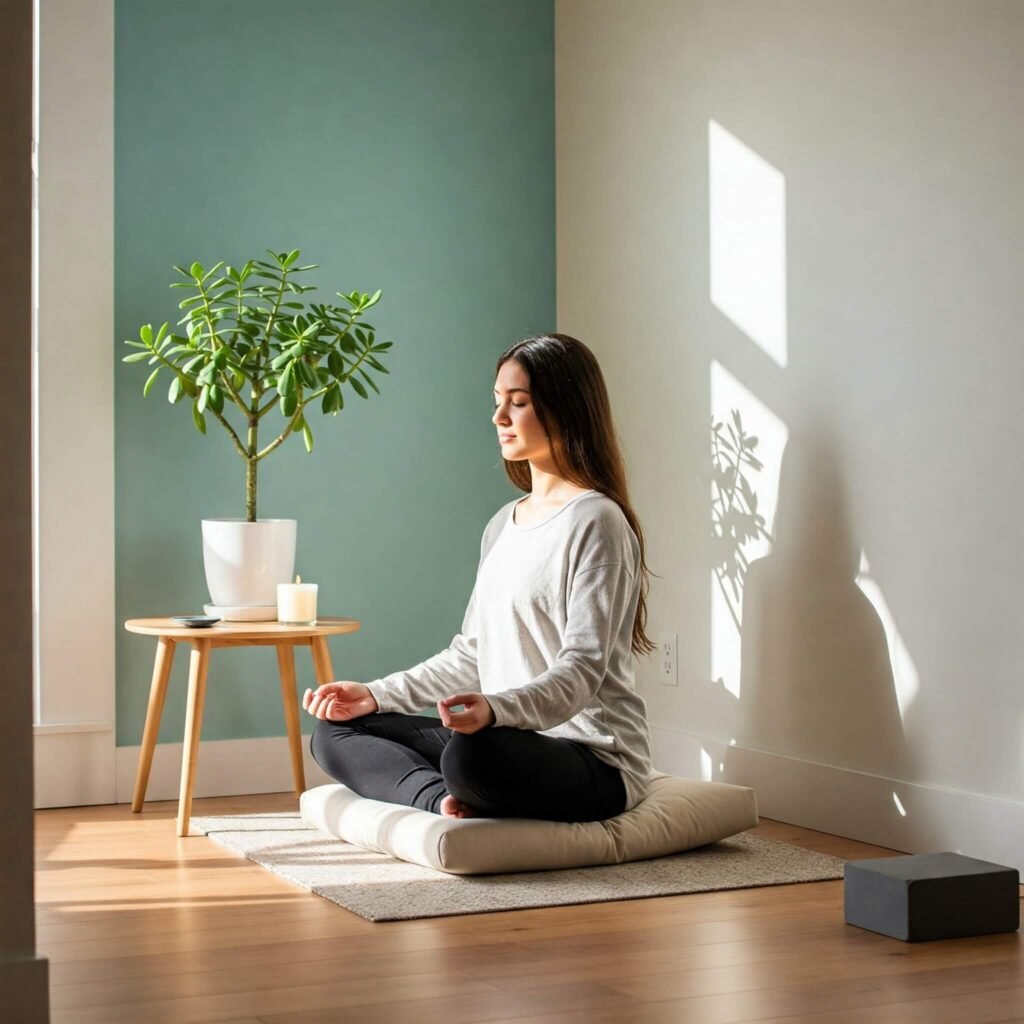In today’s fast-paced world, finding calm can feel impossible. That’s where meditation techniques for beginners come in. These simple practices help you reduce stress, boost focus, and find peace in just 10 minutes a day. Whether you’re new to meditation or looking to refine your skills, this guide offers actionable steps to kickstart your mindfulness journey.
Meditation doesn’t require hours of silence or a Zen-like mastery. With the right techniques, anyone can cultivate calm. Let’s explore beginner-friendly methods, practical tips, and how to make meditation a daily habit.

Why Meditation Techniques for Beginners Matter
Meditation is more than a trend—it’s a science-backed tool for mental health. Studies, like those from Harvard Medical School, show mindfulness reduces anxiety, improves focus, and even lowers blood pressure. For beginners, meditation offers a low-effort way to manage stress and enhance well-being.
Starting small is key. A 10-minute daily practice can transform your mindset. Let’s dive into the best meditation techniques for beginners to get you started.
: Top 5 Meditation Techniques for Beginners
These beginner-friendly methods are simple, effective, and perfect for a 10-minute daily practice.
1. Guided Meditation for Beginners
Guided meditation involves listening to an instructor’s voice, often via apps like Calm or Headspace. It’s ideal for those new to mindfulness.
- How to do it: Find a quiet space, put on headphones, and follow the guide’s instructions. Focus on their voice and let distractions fade.
- Why it works: The guidance keeps your mind from wandering, making it easier to stay present.
- Example: Sarah, a busy mom, uses a 10-minute guided session each morning to start her day calmly.
2. Breath Awareness Meditation
This classic technique centers on your breath, a natural anchor for mindfulness.
- How to do it: Sit comfortably, close your eyes, and focus on your inhales and exhales. Count each breath to stay focused (e.g., “In, one; out, two”).
- Why it works: It’s simple and requires no tools, perfect for beginners.
- Tip: If your mind wanders, gently return to your breath without judgment.

: 3. Body Scan Meditation
Body scan meditation helps you connect with your physical self, releasing tension.
- How to do it: Lie down or sit, close your eyes, and mentally “scan” your body from head to toe. Notice sensations without trying to change them.
- Why it works: It promotes relaxation and body awareness, ideal for stress relief.
- Example: John, a desk worker, uses a 10-minute body scan to ease neck tension after work.
4. Mantra Meditation
This technique uses a repeated word or phrase to focus the mind.
- How to do it: Choose a calming word (e.g., “peace” or “calm”). Sit quietly, repeat the mantra silently, and let it anchor your thoughts.
- Why it works: The repetition creates a meditative rhythm, reducing mental chatter.
- Tip: Apps like Insight Timer offer mantra-based sessions.
: 5. Mindfulness Meditation
Mindfulness meditation encourages observing thoughts without judgment.
- How to do it: Sit in a quiet space, notice your thoughts, and let them pass like clouds. Focus on the present moment.
- Why it works: It builds mental resilience and clarity, even in just 10 minutes.
- Example: Lisa, a student, practices mindfulness to stay grounded during exams.
: How to Start Your 10-Minute Meditation Practice
Ready to try meditation technique for beginners? Follow these steps to build a sustainable habit.
- Choose a Time: Morning or evening works best for consistency.
- Find a Quiet Space: A cozy corner or park bench will do.
- Set a Timer: Use a 10-minute timer to stay focused.
- Get Comfortable: Sit or lie down in a relaxed position.
- Start Small: Try one technique (e.g., breath awareness) for a week before exploring others.
Pro Tip: Track your progress with a journal. Note how you feel after each session to stay motivated.

Common Challenges in Beginner Meditation (and How to Overcome Them)
New to meditation? Here are common hurdles and solutions:
- Wandering Mind: It’s normal! Gently redirect your focus to your breath or mantra.
- Lack of Time: Even 5 minutes counts. Try meditating during lunch breaks.
- Feeling Restless: Start with guided meditation to stay engaged.
- Doubting Benefits: Be patient—research from Mayo Clinic shows benefits build over time.
Why 10 Minutes of Meditation Works for Beginners
A 10-minute practice is long enough to calm the mind but short enough to fit busy schedules. According to a 2018 study in Frontiers in Neuroscience, even brief meditation sessions improve focus and reduce stress. By sticking to meditation technique for beginners, you’ll notice:
- Less anxiety and better mood.
- Improved sleep quality.
- Enhanced focus for work or study.
Takeaway: Start Your Meditation Journey Today
Meditation techniques for beginners are your gateway to peace in just 10 minutes a day. Whether you choose guided meditation, breath awareness, or mindfulness, the key is consistency. Start with one technique, practice daily, and watch stress melt away.
Ready to begin? Download a meditation app, set a timer, and try a 10-minute session now. Your mind will thank you.
































